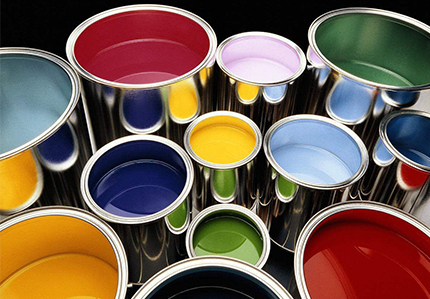Coupling agents play an increasingly important role in life and are more and more widely used, especially titanate coupling agents, which have brought convenience to people and solved many problems. Today we will analyze the performance of the coupling agents.
1. The coupling agent is used in the bonding of metal and non-metal in structural adhesives. If a silane-based tackifier is used, it can condense with metal oxides or condense with another silanol, so that silicon atoms can be bonded to the surface of the glued object. close contact. For example, adding silane as tackifier in nitrile phenolic structural adhesive can significantly improve the bonding strength.
2. Silane coupling agent has been widely used as treatment agent in bonding glass fiber both at home and abroad. It can chemically react with the interface, thereby increasing the bond strength. For example, if silane is not used as a treatment agent for neoprene adhesive bonding, the adhesive peel strength is 1.07Kg/㎠, and if aminosilane is used as a treatment agent, the adhesive peel strength is 8.7Kg/㎠.
3. Coupling agent In the bonding of rubber and other materials, silane tackifier has a special function. It obviously improves the bonding strength of various rubbers and other materials. For example, when glass and urethane rubber are glued, the peel strength of the glue is 0.224Kg/㎠ if silane is not used as a treatment agent, and 7.26Kg/㎠ when silane is added.
4. The bonding problems that cannot be solved by ordinary adhesives can sometimes be solved by silane coupling agents. Such as aluminum and polyethylene, silicone rubber and metal, silicone rubber and plexiglass, according to the chemical bond theory, select the corresponding silane coupling agent, get a satisfactory solution. For example, the use of vinyl triperoxide tert-butyl silane can bond polyethylene to aluminum foil; the use of butadienyl triethoxysilane can make the peel strength of silicone rubber and metal reach 21.6-22.4Kg/㎠.
The use of coupling agents with general adhesives or resins can not only improve the adhesive strength, but also increase the water resistance and durability of the adhesive force. For example, polyurethane and epoxy resin have high adhesion to many materials, but the adhesion durability and water resistance are not ideal; after adding silane coupling agent, the performance in this area can be significantly improved.
The inorganic powder surface is modified by aluminate coupling agent and used in composite products. The inorganic and organic ends of the coupling agent can chemically react with the surface of the inorganic filler and the organic resin or form an entanglement structure, enhancing the In order to improve the interfacial compatibility between inorganic powder and organic resin, modification with aluminate coupling agent can not only improve the processing performance of plastic products filled with inorganic powder, but also significantly improve the physical and mechanical properties of the product, making the product water absorption rate is reduced, the oil absorption is reduced, and the filler is dispersed evenly.
 English
English 日本語
日本語 한국어
한국어 français
français Deutsch
Deutsch Español
Español italiano
italiano русский
русский português
português العربية
العربية tiếng việt
tiếng việt

